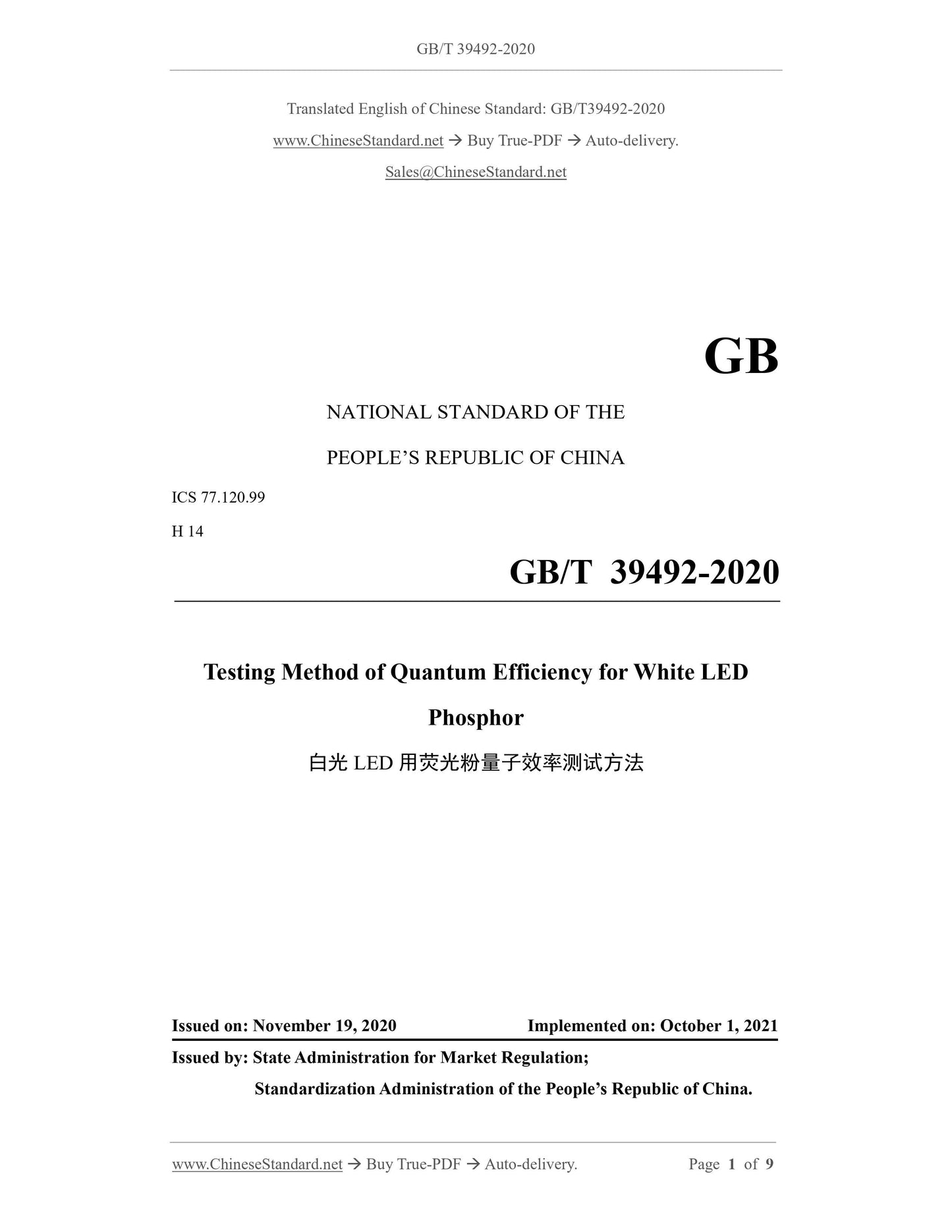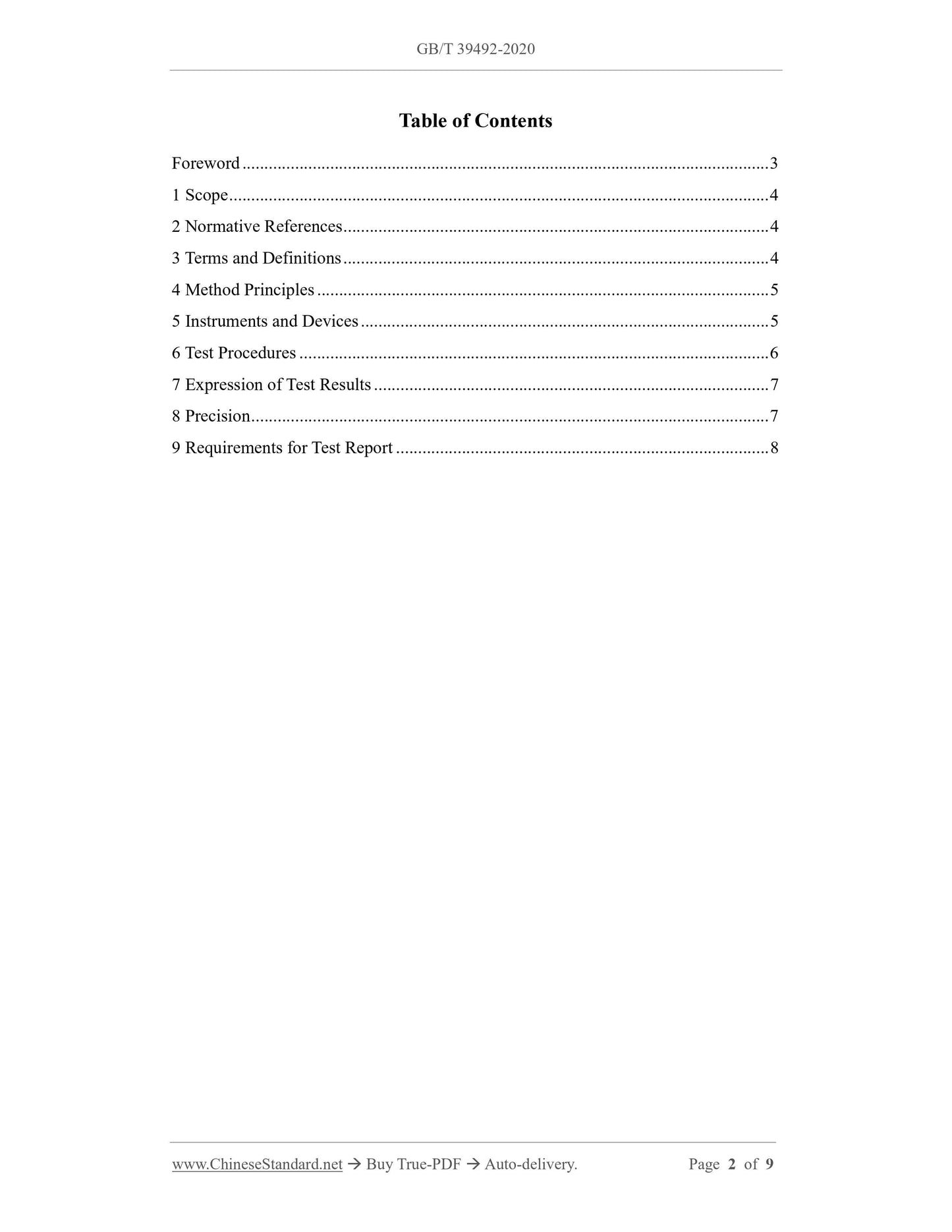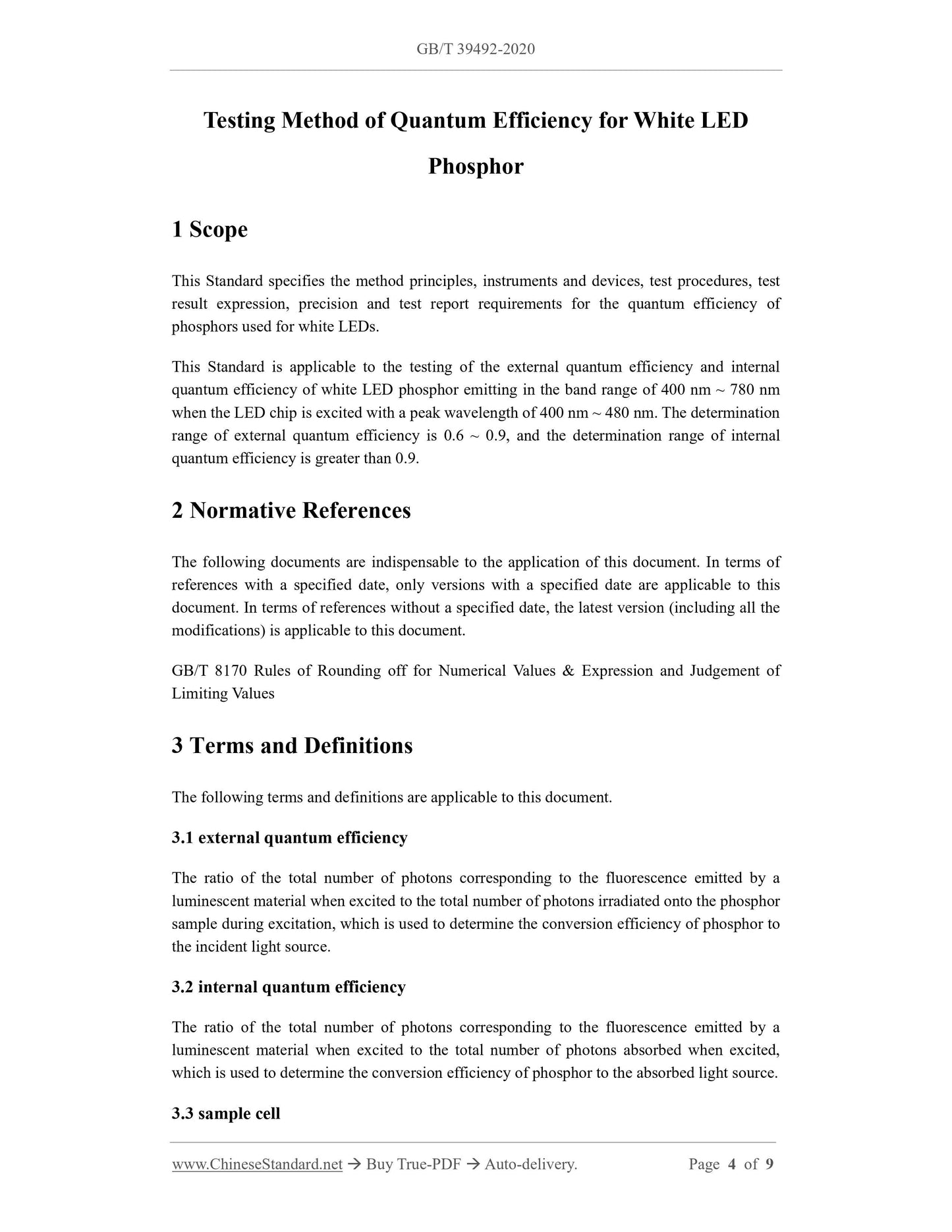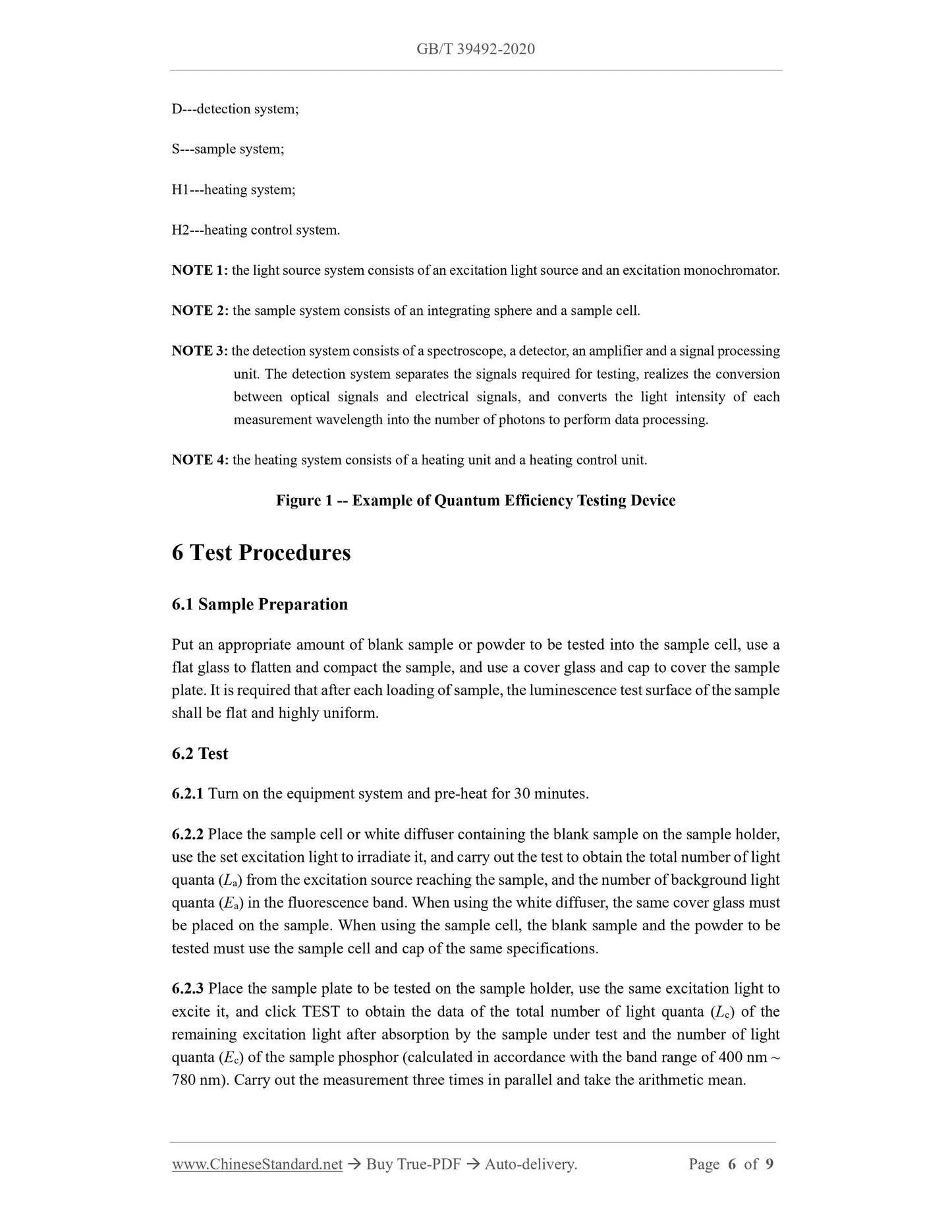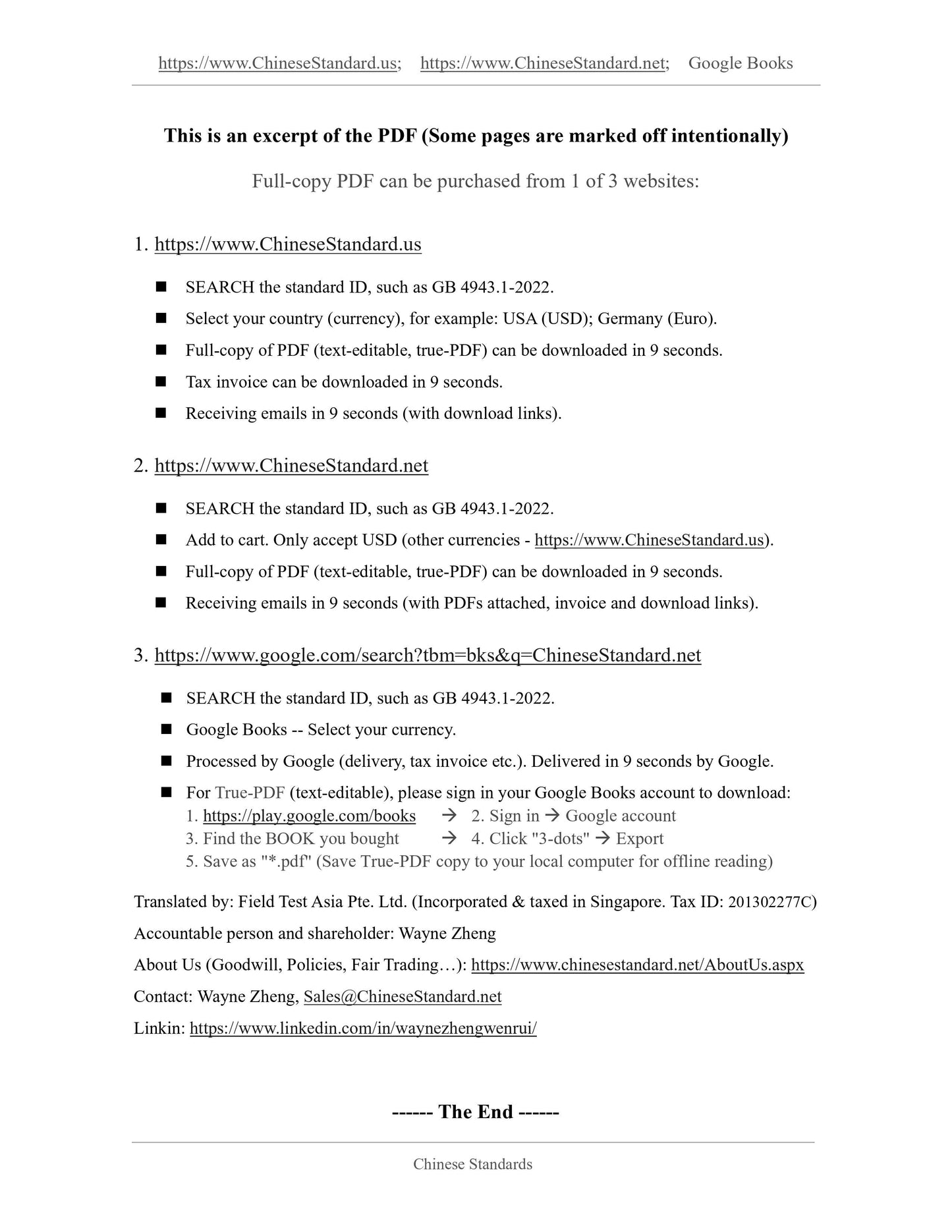1
/
of
5
www.ChineseStandard.us -- Field Test Asia Pte. Ltd.
GB/T 39492-2020 English PDF (GB/T39492-2020)
GB/T 39492-2020 English PDF (GB/T39492-2020)
Regular price
$110.00
Regular price
Sale price
$110.00
Unit price
/
per
Shipping calculated at checkout.
Couldn't load pickup availability
GB/T 39492-2020: Testing method of quantum efficiency for white LED phosphor
Delivery: 9 seconds. Download (and Email) true-PDF + Invoice.Get Quotation: Click GB/T 39492-2020 (Self-service in 1-minute)
Newer / historical versions: GB/T 39492-2020
Preview True-PDF
Scope
This Standard specifies the method principles, instruments and devices, test procedures, testresult expression, precision and test report requirements for the quantum efficiency of
phosphors used for white LEDs.
This Standard is applicable to the testing of the external quantum efficiency and internal
quantum efficiency of white LED phosphor emitting in the band range of 400 nm ~ 780 nm
when the LED chip is excited with a peak wavelength of 400 nm ~ 480 nm. The determination
range of external quantum efficiency is 0.6 ~ 0.9, and the determination range of internal
quantum efficiency is greater than 0.9.
Basic Data
| Standard ID | GB/T 39492-2020 (GB/T39492-2020) |
| Description (Translated English) | Testing method of quantum efficiency for white LED phosphor |
| Sector / Industry | National Standard (Recommended) |
| Classification of Chinese Standard | H14 |
| Word Count Estimation | 6,656 |
| Date of Issue | 2020-11-19 |
| Date of Implementation | 2021-10-01 |
| Regulation (derived from) | National Standard Announcement No. 26 of 2020 |
| Issuing agency(ies) | State Administration for Market Regulation, China National Standardization Administration |
Share
